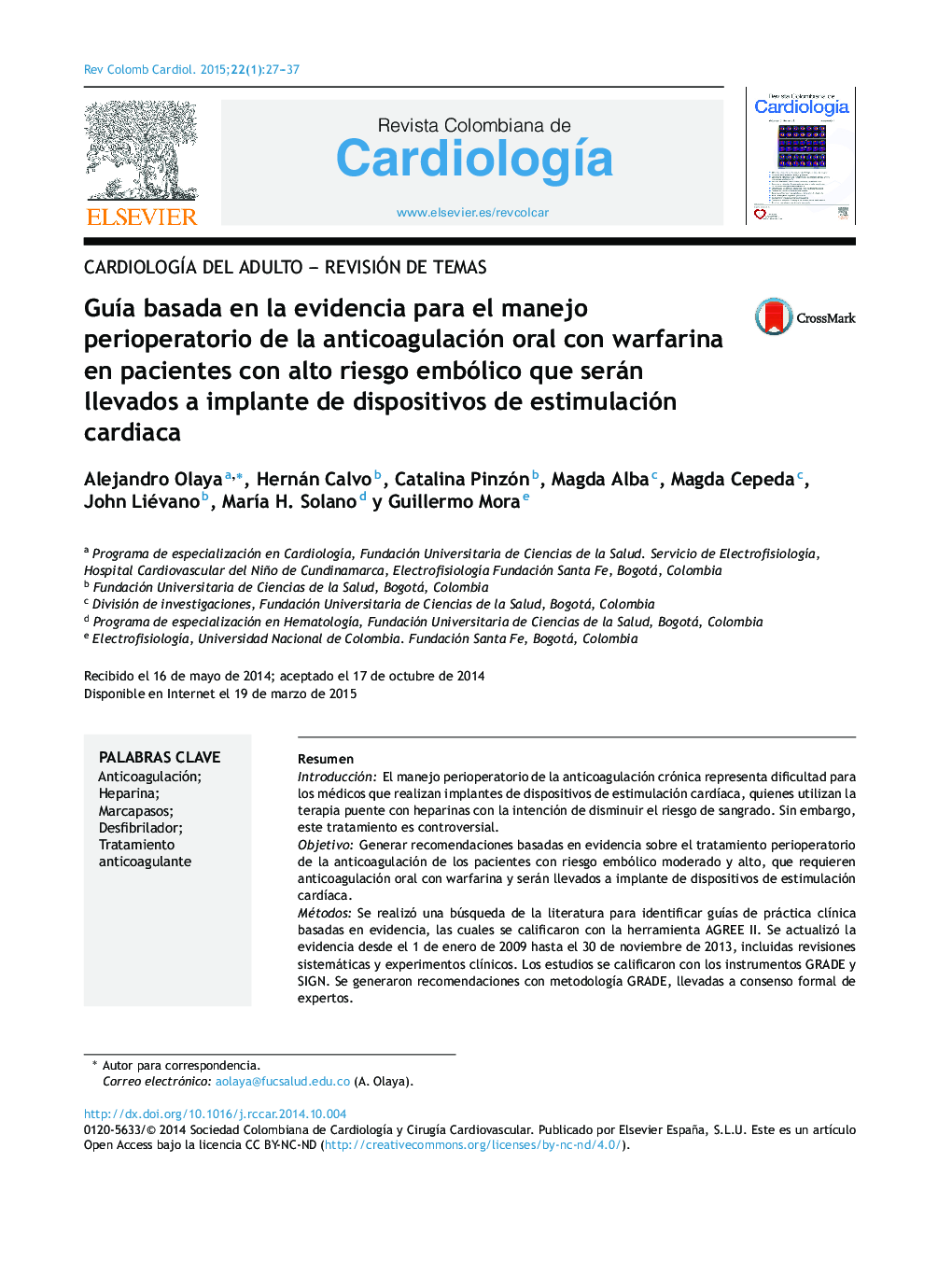| Article ID | Journal | Published Year | Pages | File Type |
|---|---|---|---|---|
| 3012208 | Revista Colombiana de Cardiología | 2015 | 11 Pages |
ResumenIntroducciónEl manejo perioperatorio de la anticoagulación crónica representa dificultad para los médicos que realizan implantes de dispositivos de estimulación cardíaca, quienes utilizan la terapia puente con heparinas con la intención de disminuir el riesgo de sangrado. Sin embargo, este tratamiento es controversial.ObjetivoGenerar recomendaciones basadas en evidencia sobre el tratamiento perioperatorio de la anticoagulación de los pacientes con riesgo embólico moderado y alto, que requieren anticoagulación oral con warfarina y serán llevados a implante de dispositivos de estimulación cardíaca.MétodosSe realizó una búsqueda de la literatura para identificar guías de práctica clínica basadas en evidencia, las cuales se calificaron con la herramienta AGREE II. Se actualizó la evidencia desde el 1 de enero de 2009 hasta el 30 de noviembre de 2013, incluidas revisiones sistemáticas y experimentos clínicos. Los estudios se calificaron con los instrumentos GRADE y SIGN. Se generaron recomendaciones con metodología GRADE, llevadas a consenso formal de expertos.ResultadosLas guías SIGN y CHEST tuvieron la mejor calificación con AGREE II. Con la nueva evidencia disponible proveniente de tres revisiones sistemáticas y dos experimentos clínicos, se generó recomendación fuerte a favor de continuar la anticoagulación oral con warfarina durante el perioperatorio de implante de dispositivos de estimulación cardíaca en pacientes con riesgo embólico moderado y alto.ConclusionesA partir de la nueva evidencia cambia la recomendación propuesta por las guías SIGN y CHEST. La alternativa de continuar la terapia con warfarina a cambio de realizar terapia puente, debe considerarse en la práctica clínica.
IntroductionThe perioperative management of chronic anticoagulation concerns all physicians involved in the implantation of cardiac electronic devices (either pacemakers and cardioverter-defibrillators). Switching from warfarin to low molecular weight heparins (LMWH) has been performed to reduce the risk of bleeding. However, this approach has been shown to be controversial.ObjectiveTo generate evidence-based recommendations on the perioperative management of oral anticoagulation with warfarin in patients who will undergo the implantation of a cardiac electronic device.MethodsA literature search was performed to identify evidence-based clinical practice guidelines, which were assessed using the AGREE II instrument. The guidelines were updated with systematic reviews and randomized clinical trials published from February 2009 to November 2013 comparing the continuation of warfarin versus switching to a LMWH or withholding warfarin. These studies were analyzed using the SIGN and GRADE scales to assess methodological quality. Recommendations were put forward through an expert panel.ResultsThe guidelines with highest methodological quality were the SIGN (Scottish Intercollegiate Guidelines Network) guideline published in June 2013 and the CHEST guideline published in February 2012. The update included three systematic reviews and two randomized clinical trials. The continuation of warfarin for the perioperative management of implantable cardiac electronic devices in patients with moderate and high risk is recommended.ConclusionBased on the new evidence changes the recommendation given by the CHEST SIGN and guides. The alternative of continued therapy with warfarin in exchange for performing therapy bridge, should be considered in clinical practice.
